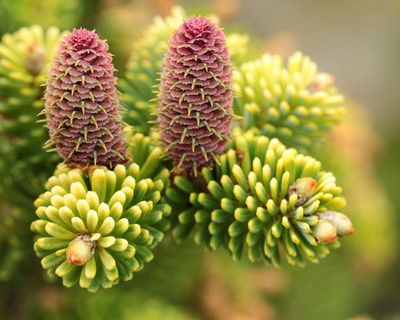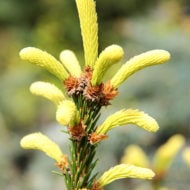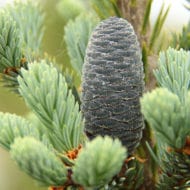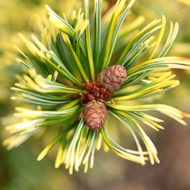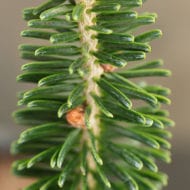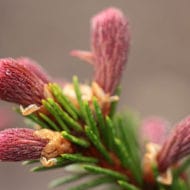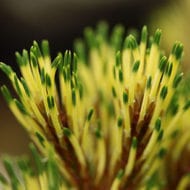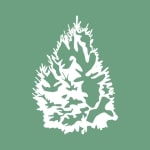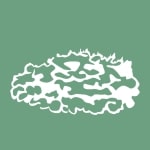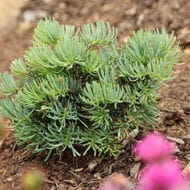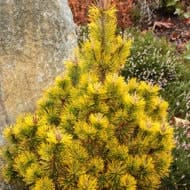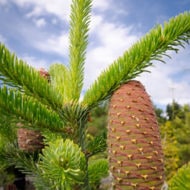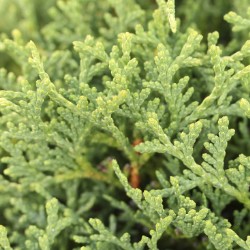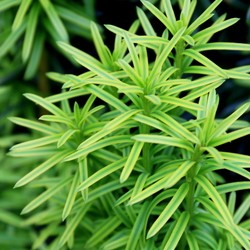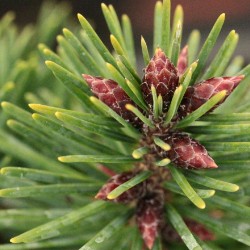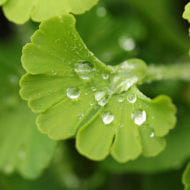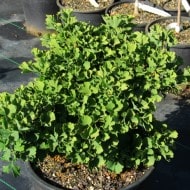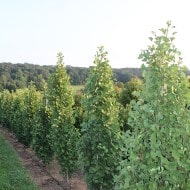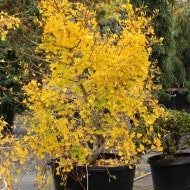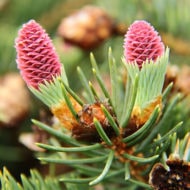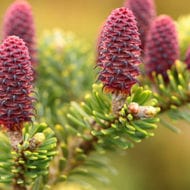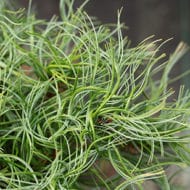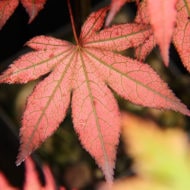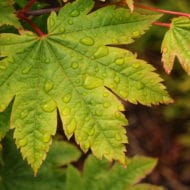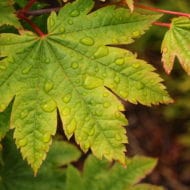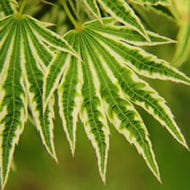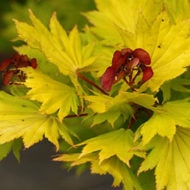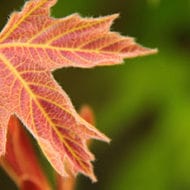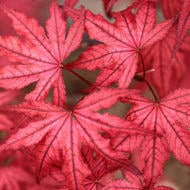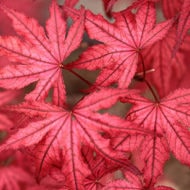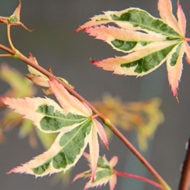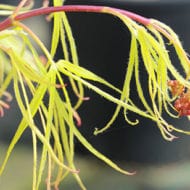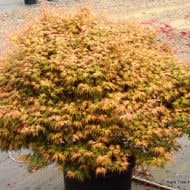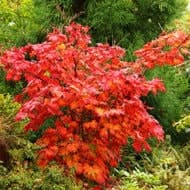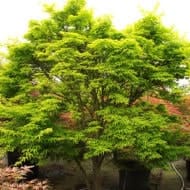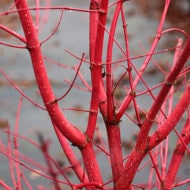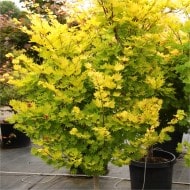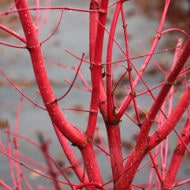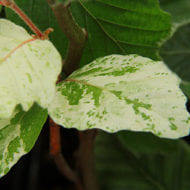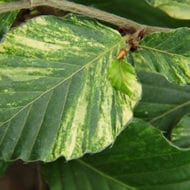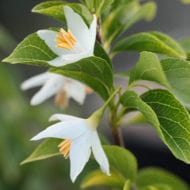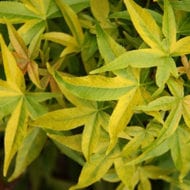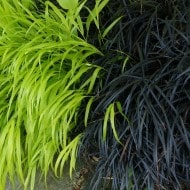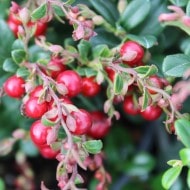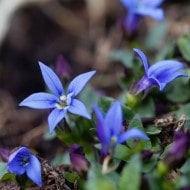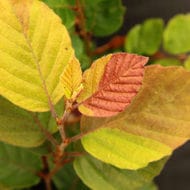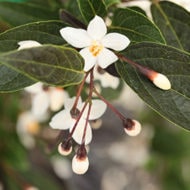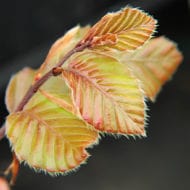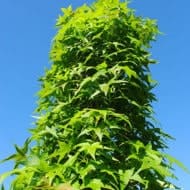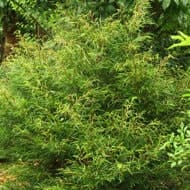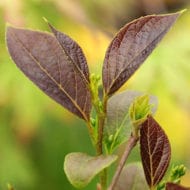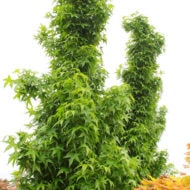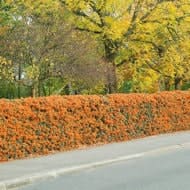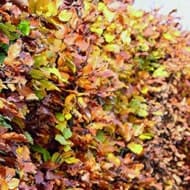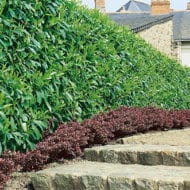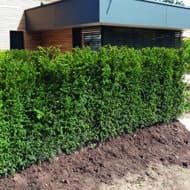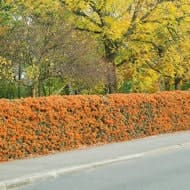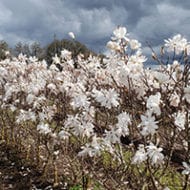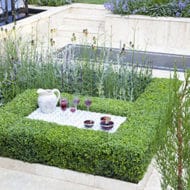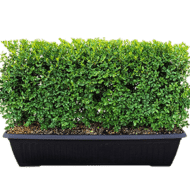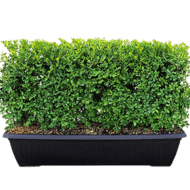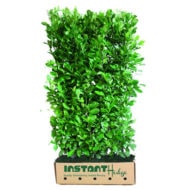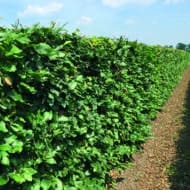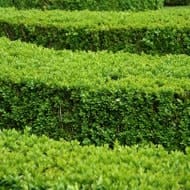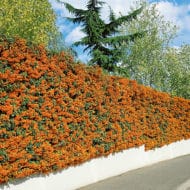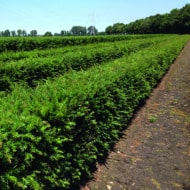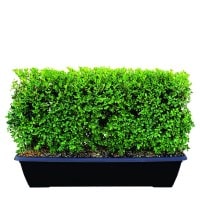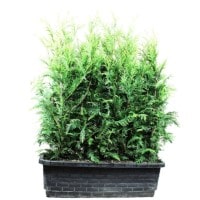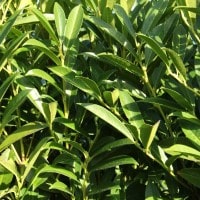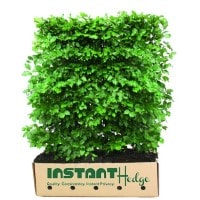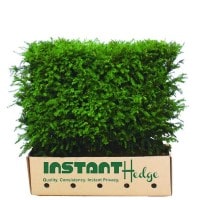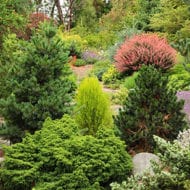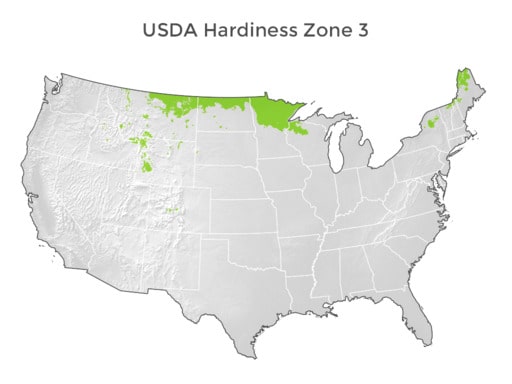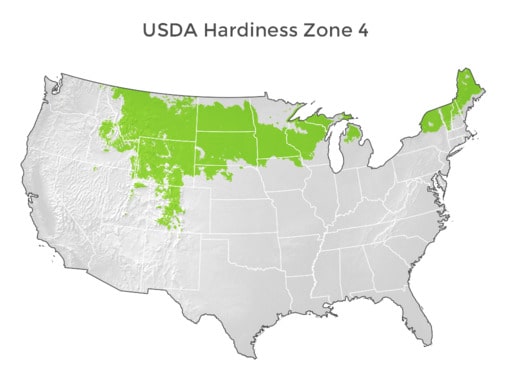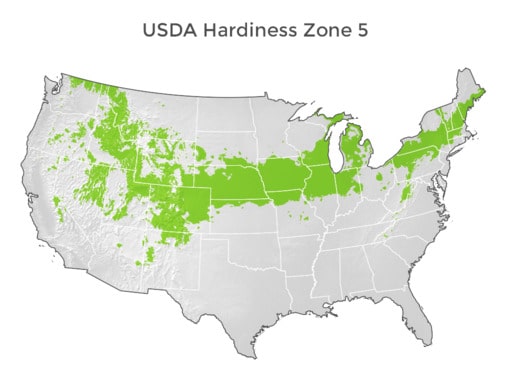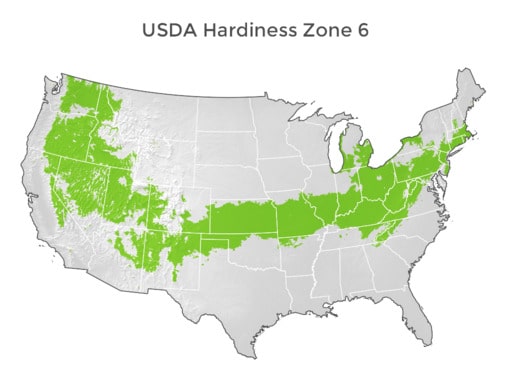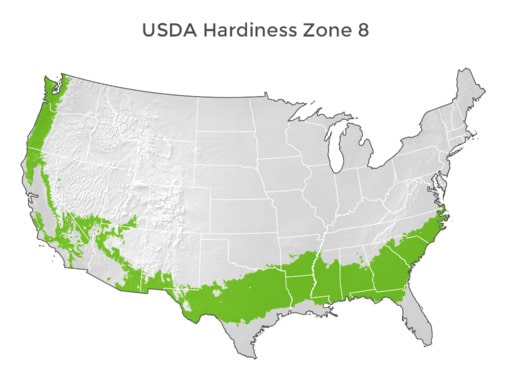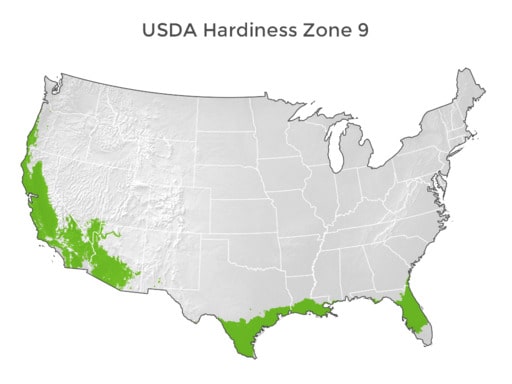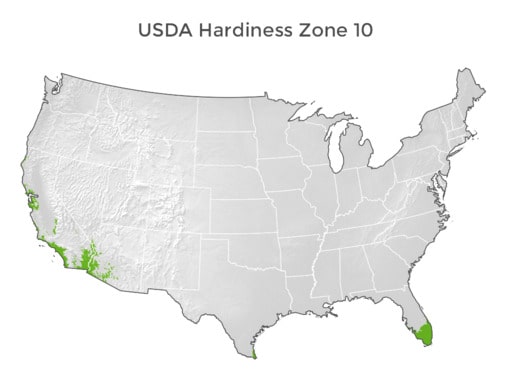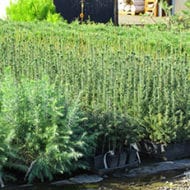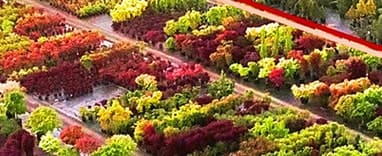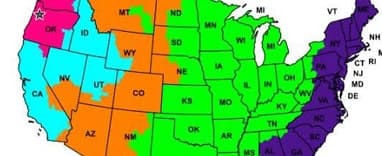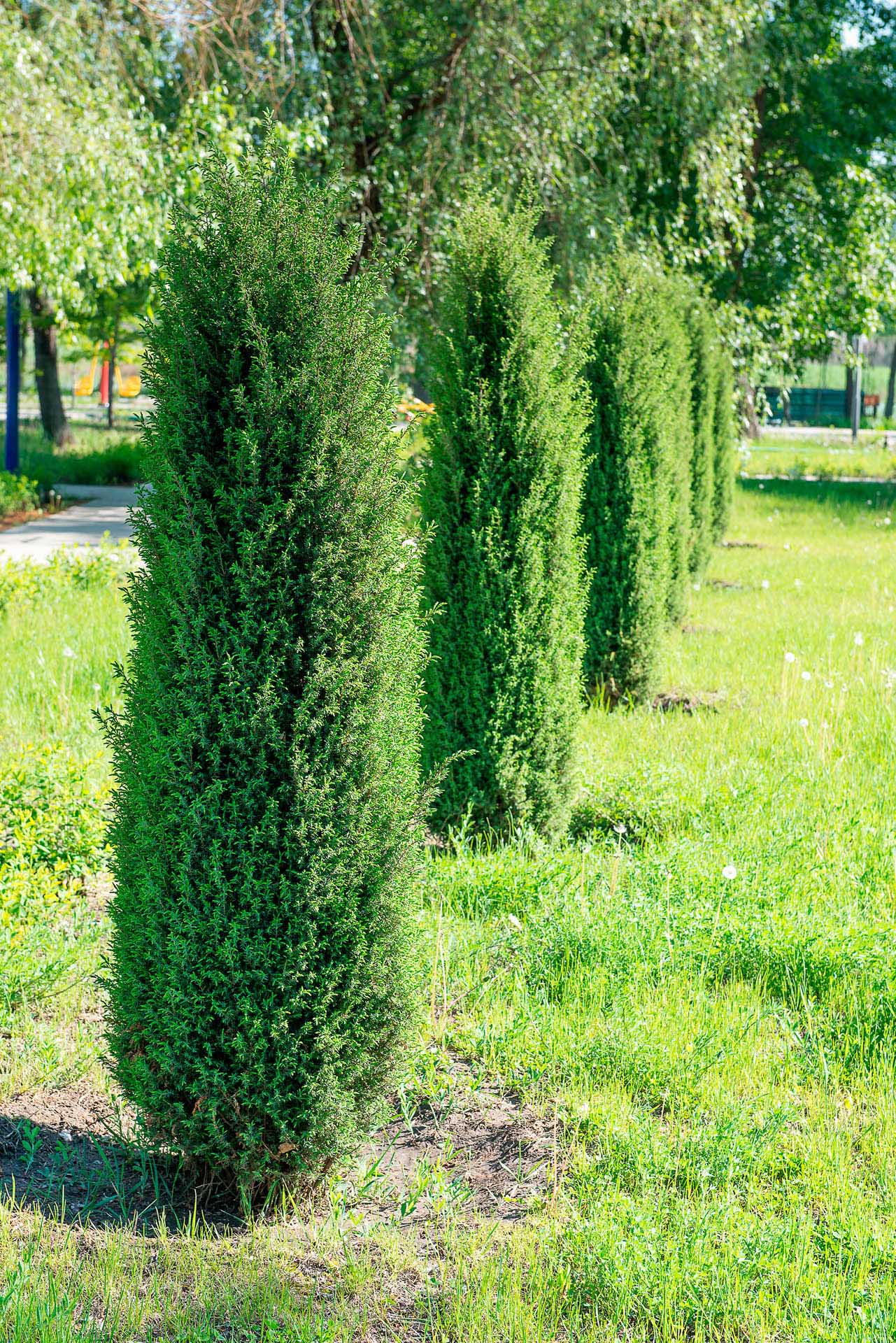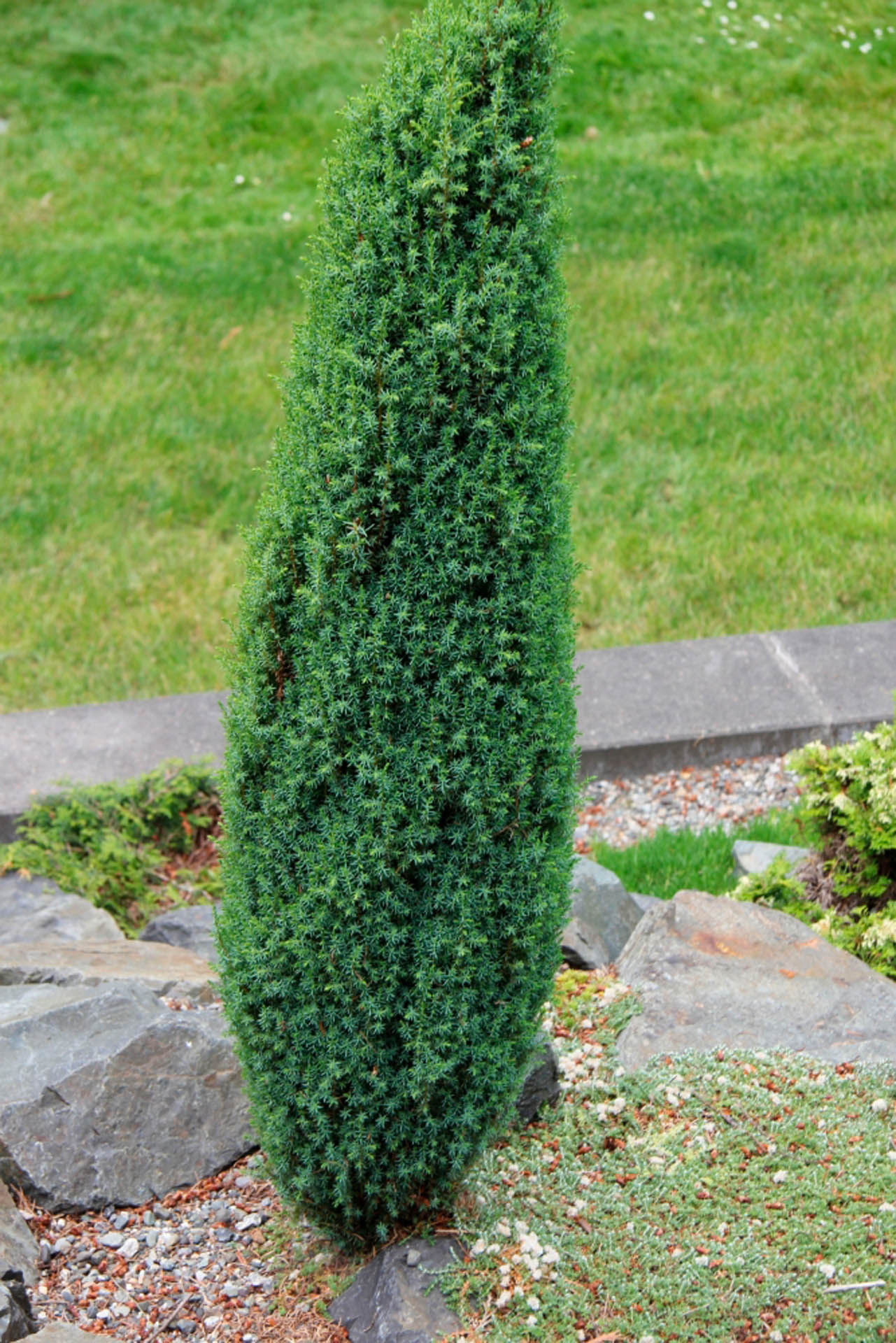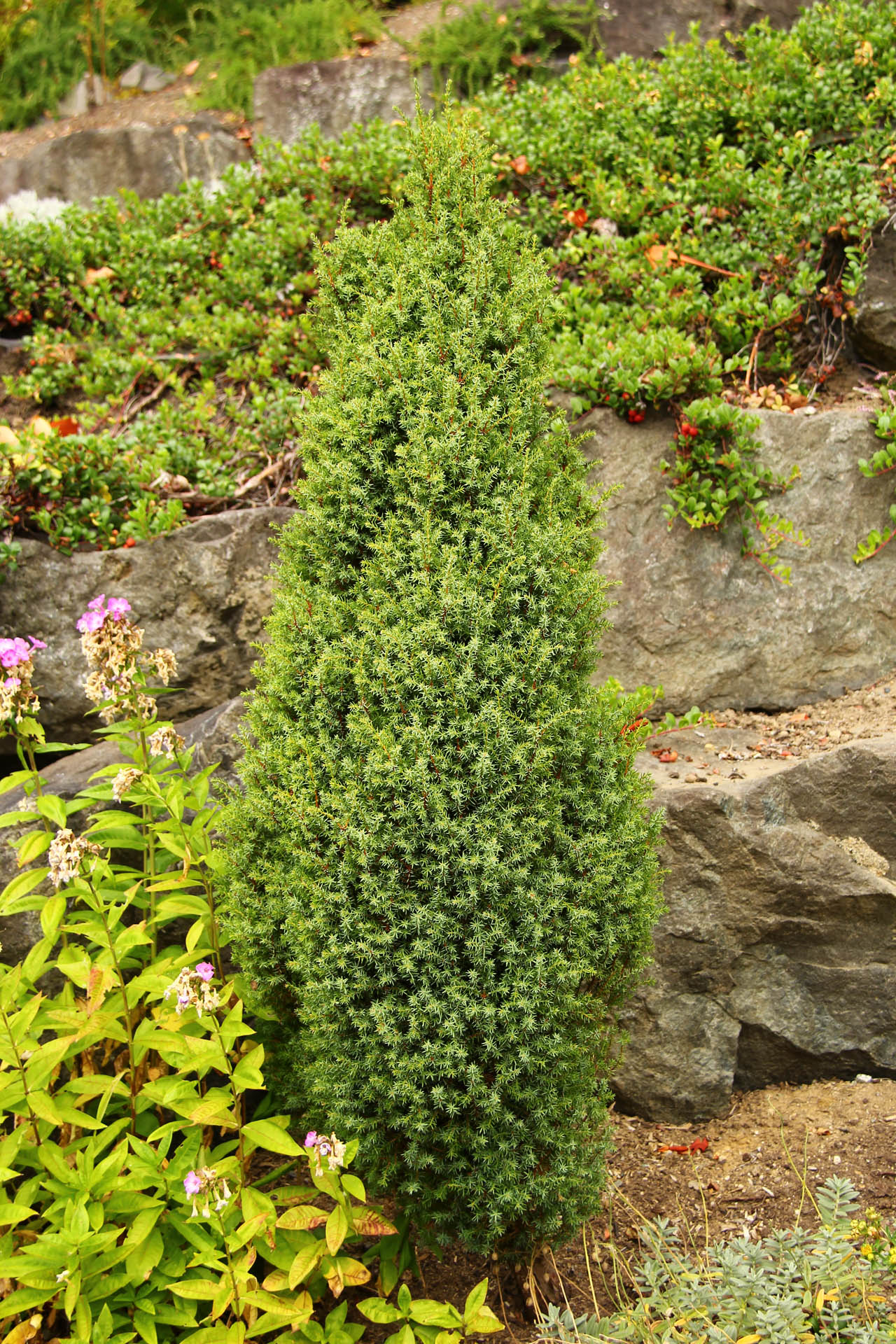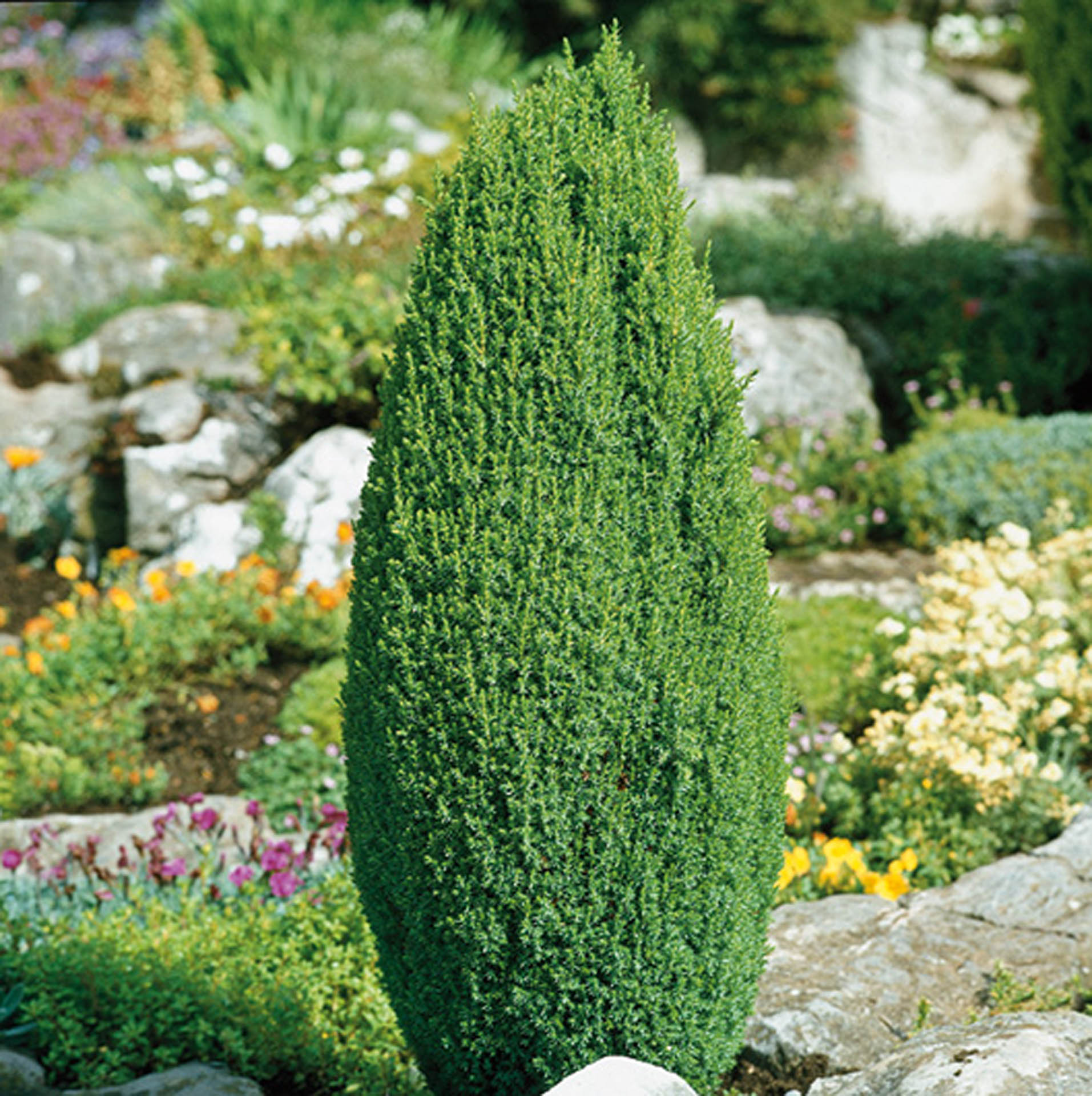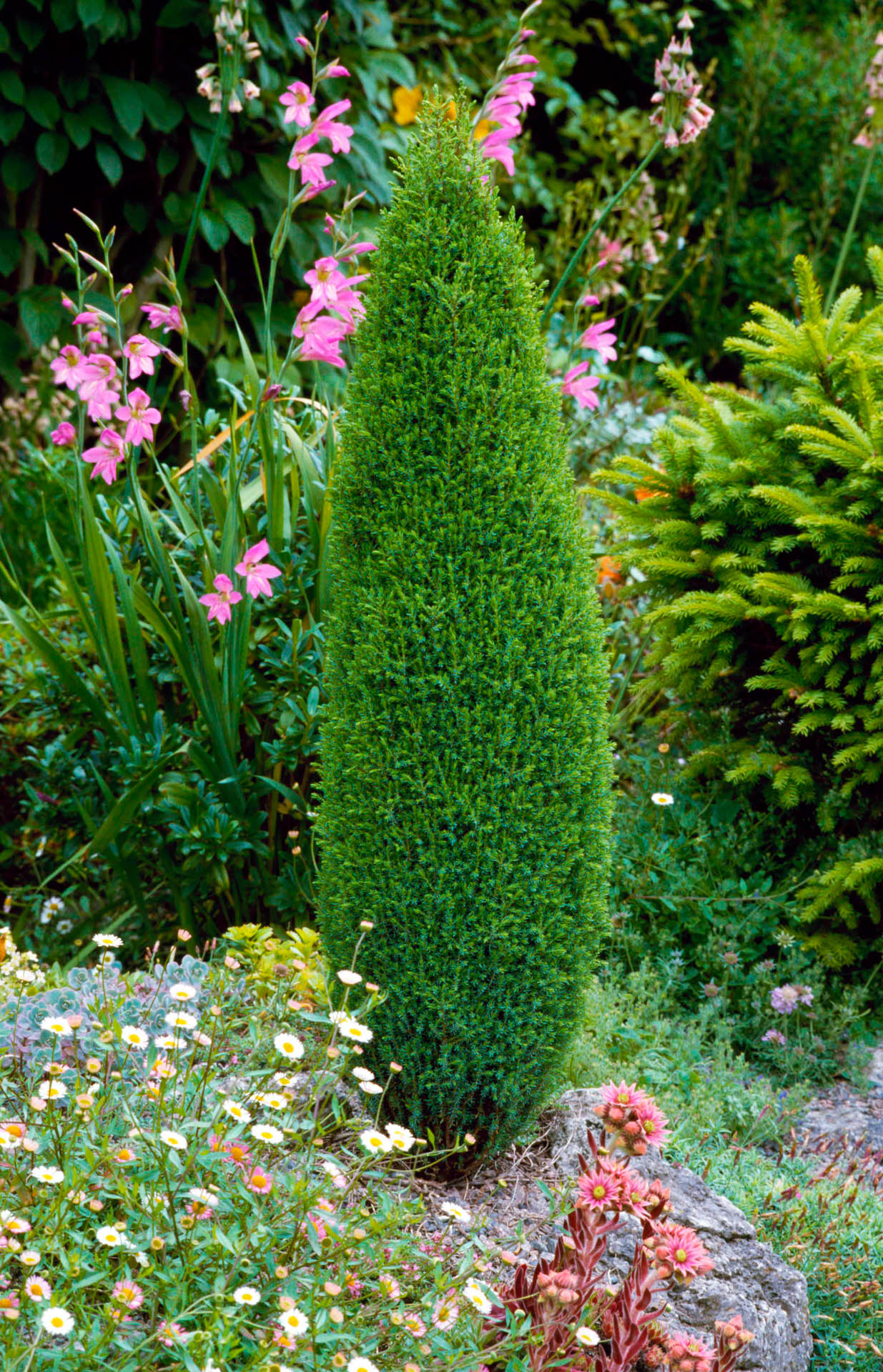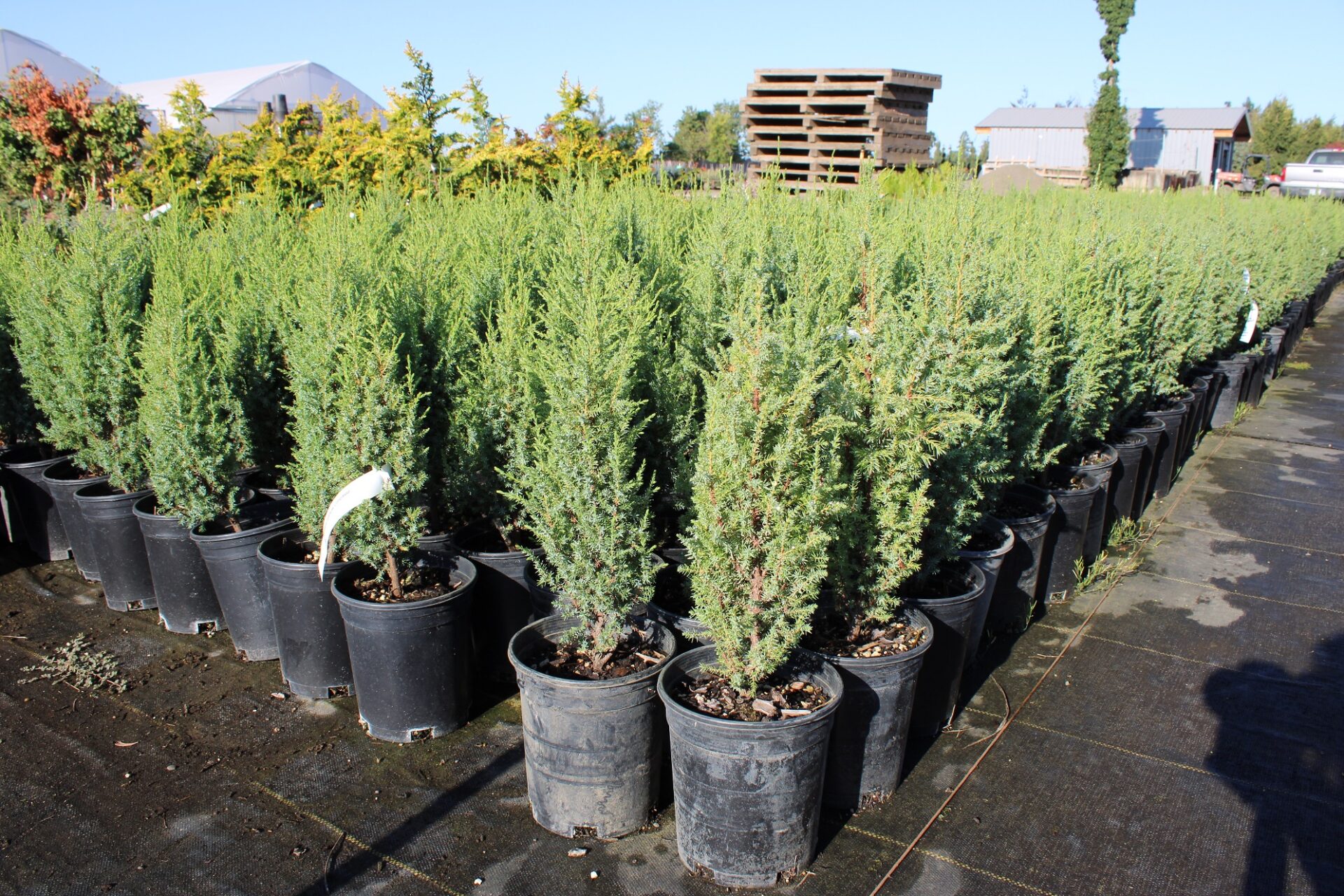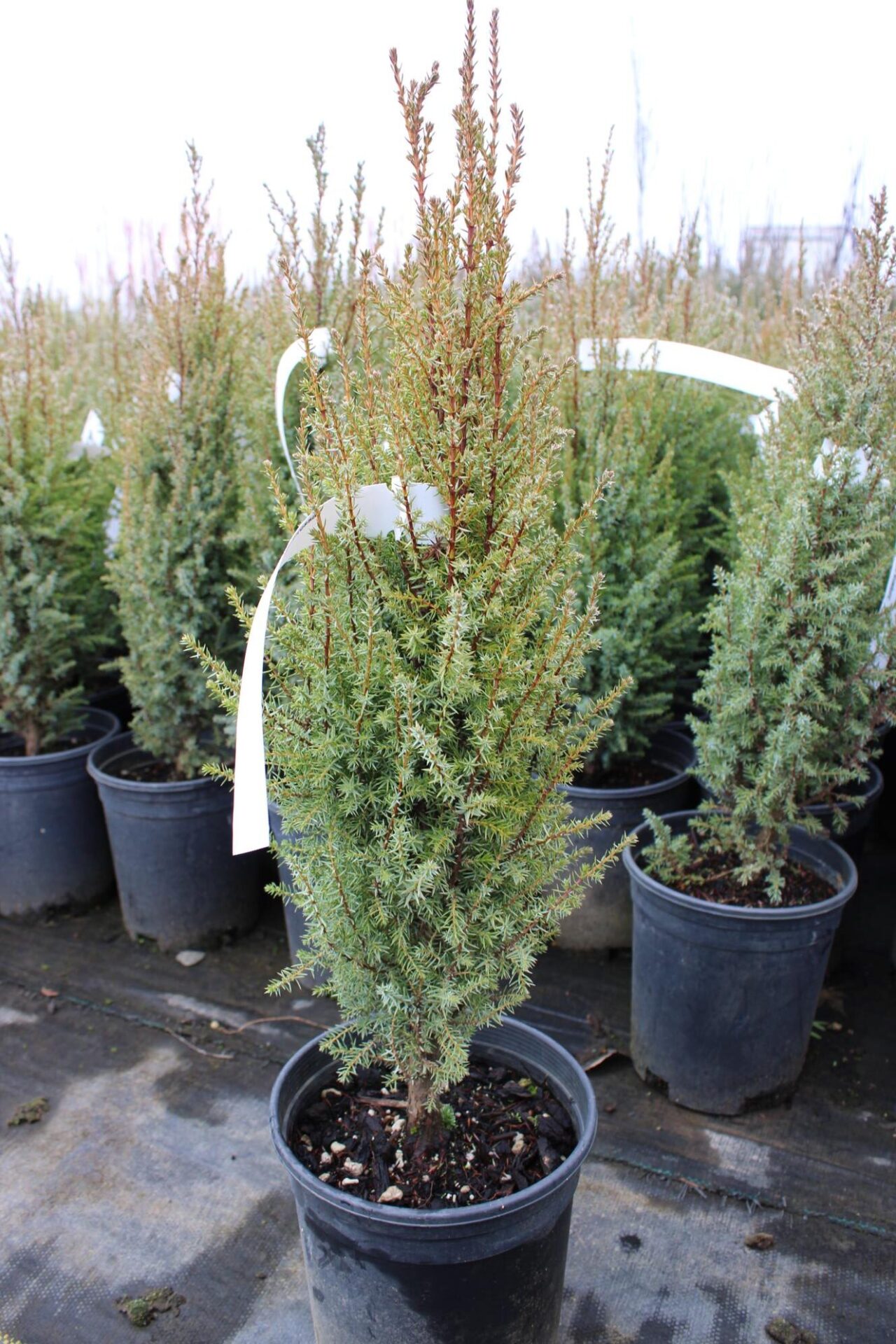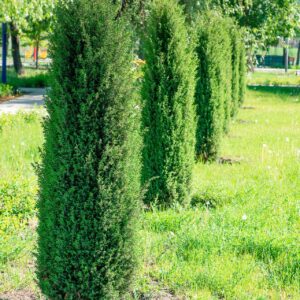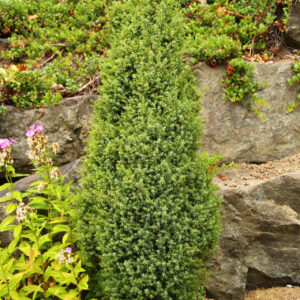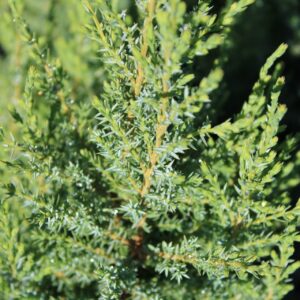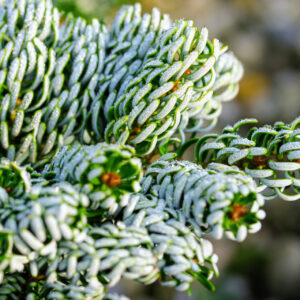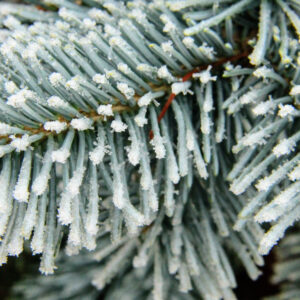Juniperus communis ‘Compressa’ Pencil Point Common Juniper
SKU: JunCom-Compressa-0-0
Categories: Columnar, Columnar, Dwarf, Dwarf Conifers, Dwarf Conifers, Gallon, Green, Green Conifers, Juniperus - Junipers, Our Plants, Ungrafted Varieties, Zone 2, Zone 3, Zone 4, Zone 5, Zone 6, Zone 7, Zone 8
Tag: GS
Description
This extremely narrow, pointed columnar juniper is a popular landscape choice as it does not take up much space. Green, fine-textured foliage is mixed with silver and blue tones.
USDA Hardiness Map

Plant Form
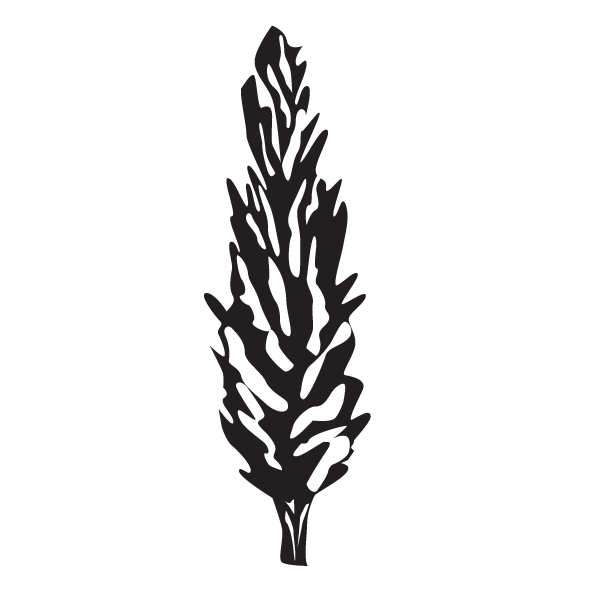
Juniperus communis ‘Compressa,’ Pencil Point or Noah’s Ark Juniper, is a dwarf evergreen with dense vertical branching that comes to a sharp-pointed tip. In 1993, its excellent attributes of size, shape, color, and adaptability qualified it for the Royal Horticultural Society’s Award of Garden Merit.
Pencil Point Juniper is green to silvery blue and turns copper-colored in the fall. Its two types of fragrant foliage—juvenile and mature—often grow on the tree simultaneously. The juvenile needles are sharp and spiky, developing into smoother mature foliage with tight scales. Junipers are wind-pollinated, and if a male juniper is nearby to provide pollen, the female plants will produce clusters of half-inch green cones that ripen into waxy blue-black fruit in the fall. These edible “juniper berries” are used medicinally, as a seasoning in spice rubs, marinades, and specific European dishes, and as the primary flavoring in gin.
Pencil Point Juniper grows slowly, 2″ to 4″ per year. It reaches a height of 3.5′ and width of 1′ in 10 years, with a maximum growth of about 6′ high and 1.5′ wide. It is an excellent choice for a container-grown tree, a boundary plant, a vertical accent in a mixed border, and small spaces such as city gardens, rock gardens, knot gardens, Japanese gardens, entrances, and balcony gardens.
This juniper grows best in full sun in moist, well-draining soil. It can tolerate various types of soil and grow in sand or clay as long as it is well-draining. It needs to be watered the first year after planting and is drought-tolerant once established. Pencil Point Juniper is exceptionally cold-hardy and will thrive in most areas of the United States and Canada in USDA zones 2-8.
To grow nearby, companion plants need the same soil, water, and sun requirements as the Pencil Point Juniper. Rounded shrubs like barberry, heather, abelia, bush roses, and hydrangea complement the shape of the tree. Low-growing perennials, such as spurge, anemones, coneflowers, sedum, oriental lilies, hellebores, ornamental grasses, lithodora, and lilyturf, add some color and interest. Spring bulbs, such as crocus, hyacinth, daffodils, tulips, snowdrops, grape hyacinths, and glory-of-the-snow, brighten the garden early in the season.
This small juniper is a magnet for wildlife, especially if it produces berries in the fall. Its dense branches provide good winter cover for birds, and the berries help a variety of small mammals and birds survive the winter.
Pencil Point Juniper is green to silvery blue and turns copper-colored in the fall. Its two types of fragrant foliage—juvenile and mature—often grow on the tree simultaneously. The juvenile needles are sharp and spiky, developing into smoother mature foliage with tight scales. Junipers are wind-pollinated, and if a male juniper is nearby to provide pollen, the female plants will produce clusters of half-inch green cones that ripen into waxy blue-black fruit in the fall. These edible “juniper berries” are used medicinally, as a seasoning in spice rubs, marinades, and specific European dishes, and as the primary flavoring in gin.
Pencil Point Juniper grows slowly, 2″ to 4″ per year. It reaches a height of 3.5′ and width of 1′ in 10 years, with a maximum growth of about 6′ high and 1.5′ wide. It is an excellent choice for a container-grown tree, a boundary plant, a vertical accent in a mixed border, and small spaces such as city gardens, rock gardens, knot gardens, Japanese gardens, entrances, and balcony gardens.
This juniper grows best in full sun in moist, well-draining soil. It can tolerate various types of soil and grow in sand or clay as long as it is well-draining. It needs to be watered the first year after planting and is drought-tolerant once established. Pencil Point Juniper is exceptionally cold-hardy and will thrive in most areas of the United States and Canada in USDA zones 2-8.
To grow nearby, companion plants need the same soil, water, and sun requirements as the Pencil Point Juniper. Rounded shrubs like barberry, heather, abelia, bush roses, and hydrangea complement the shape of the tree. Low-growing perennials, such as spurge, anemones, coneflowers, sedum, oriental lilies, hellebores, ornamental grasses, lithodora, and lilyturf, add some color and interest. Spring bulbs, such as crocus, hyacinth, daffodils, tulips, snowdrops, grape hyacinths, and glory-of-the-snow, brighten the garden early in the season.
This small juniper is a magnet for wildlife, especially if it produces berries in the fall. Its dense branches provide good winter cover for birds, and the berries help a variety of small mammals and birds survive the winter.
Additional information
| Weight | N/A |
|---|---|
| LATIN NAME | Juniperus communis 'Compressa' |
| COMMON NAME | Pencil Point Common Juniper |
| SUN EXPOSURE | Sun |
| ANNUAL GROWTH | 2-4" |
| Growth Rate | Dwarf |
| HXW@10 YEARS | 3.5'x1' |
| Color | Green |
| Form | Columnar |
| HARDINESS ZONE | Zones 2-8 |
| Color | |
| Growth Rate | |
| Form | |
| Your auto-detected zip code |  |
| hardiness zone based on zip code |  |
| You can also try another zip code |


